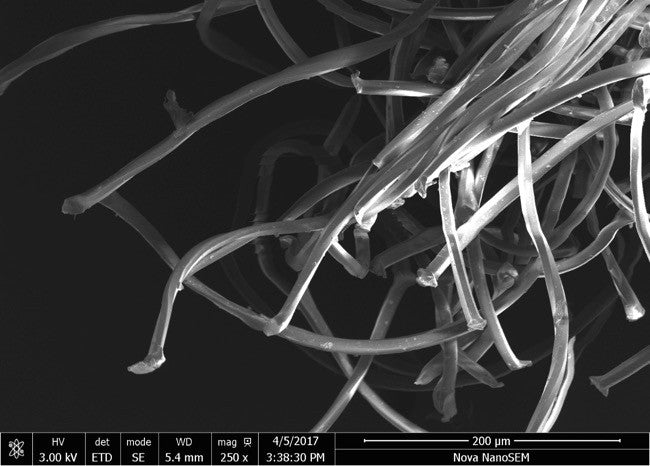The Lowdown on Microfibres
As a brand whose history and values are steeped in keeping our seas protected clean, we're joining in on the conversation on microfibres and giving you all the facts you need to know.

Marine Microfibres: The Invisible Threat
Marine microplastics have recently been identified as a major threat to our seas and marine life. Microfibres make up a large percentage of this microplastic pollution, having been found in vast amounts in even the most remote of marine ecosystems.
What is the difference between microfibres and microplastics?
You will probably have heard about the increasing problem of microplastics entering our ecosystem, finding its way into oceans through sewers and ending up inside marine life and our food chain. Microplastics are the tiny plastic particles often found in cosmetic products from exfoliants to toothpaste. These particles are often too small to be filtered by wastewater treatment plants. Microfibres, more specifically, are the tiny fibres shed by clothing such as polyester fleece or nylon, which invade our water systems when they are washed.
What is the problem?
Microfibres are an invisible problem. These tiny particles are 60 to 100 times finer than human hair, and can enter the waterways through textile productions and garment washing, before ending up in the marine environment.
Why should we care?
The problem is twofold. Short term, it affects our seas and the animals that live in it. Statistics show that 1 in 4 fish tested now contain microplastics, whilst 90% of seabirds have plastics in their guts. All of these figures contribute to the prediction that by 2050, there could be more plastic in the ocean than fish.
Long term, these plastics attract toxins which mean these animals in our own food chain could have a massive effect on our own health too.
What are Finisterre planning on doing about it?
There are short term and long term solutions to a problem as wide as this; we've been discussing it in the workshop for some time now.
Right now, we are taking a look at every element of the clothing lifecycle, from design to wash care, to ensure that the future of Finisterre is microfibre conscious.
In order to address the issue on a wider scale, Finisterre are also proud to be working with Sophie Mather’s ‘Don’t Feed The Fish’ campaign, supporting it through funding and working closely with her as well as the textiles and marine biology researchers at the Plymouth and Leeds universities, and collaborating with other brands to unravel this issue.
We're not jumping to conclusions as to which fibres are ‘better’ or ‘worse’; but we will be paying close attention to the study’s findings along the way, in order to get a deeper understanding of the problem, to inform our textile decisions, evolve our product and lessen our impact.
We'll be updating The Broadcast on our movements with Sophie Mather and the microfibre debate - stay tuned in to find out more.

